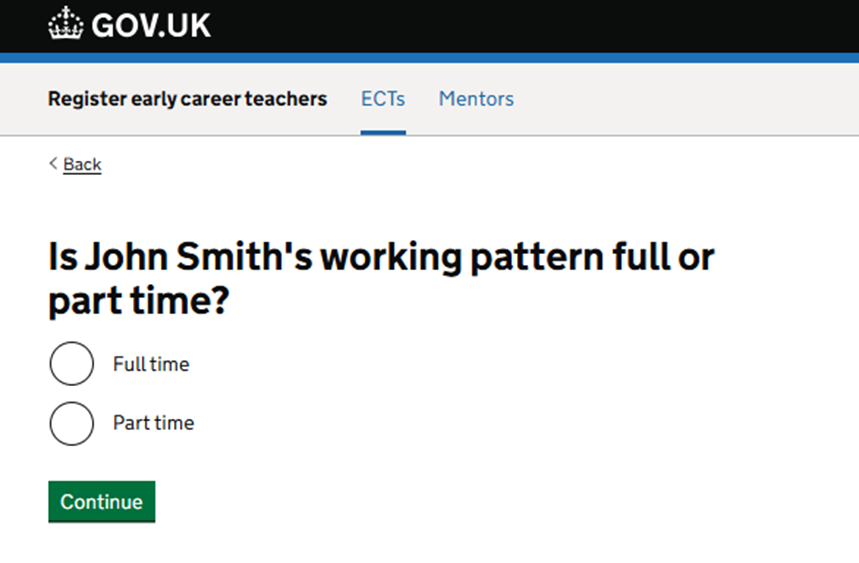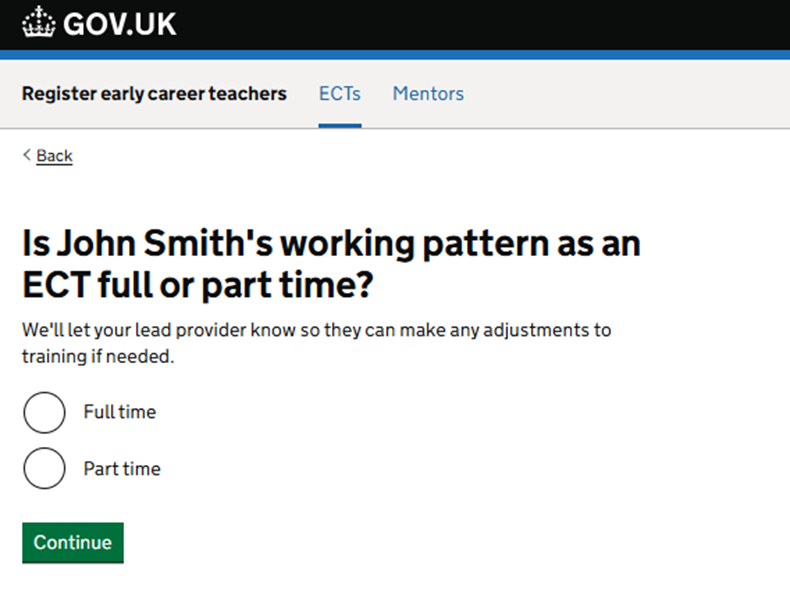Asking schools whether an ECT is full or part time
Why we’re doing this
We wanted to ask schools for an ECT’s working pattern so we can share this information with lead providers.
It’s useful for lead providers to understand if an ECT has a part time working pattern so they can follow up with the school to make any necessary adjustments for training. For example, part time ECTs might do their training over a longer period than 2 years.
We decided not to ask mentors about their working pattern as lead providers said this information is less useful to them, and we thought this question would be harder for schools to understand. However, lead providers still have a contractual requirement to establish whether a mentor will be training full or part time.
What we tested with users
We tested a page where users could select whether an ECT was full or part time. All users were able to answer the question correctly during testing. However, some users expressed confusion or concern over the question and what it would impact.
This included:
-
what option to select if they had a person working full time at their school, for example, as a cover supervisor, but part time as an ECT
-
a need for additional reassurance on why we’re asking for this information
-
concerns over whether an ECT with a part time working pattern would meet the entitlement for induction over the 2-year period

Following feedback from users and consulting with lead providers, we amended the question to include the phrase ‘as an ECT’ to make it clearer in scenarios where someone is working full time at a school, but part time as an ECT.
We also introduced some hint text to let users know why we’re asking for this information and reassure them that it’s to help make any necessary adjustments if required.

What we need to do next
We’ll progress with adding this question into the development of the service and continue monitoring in further rounds of research to ensure users are comfortable with it.